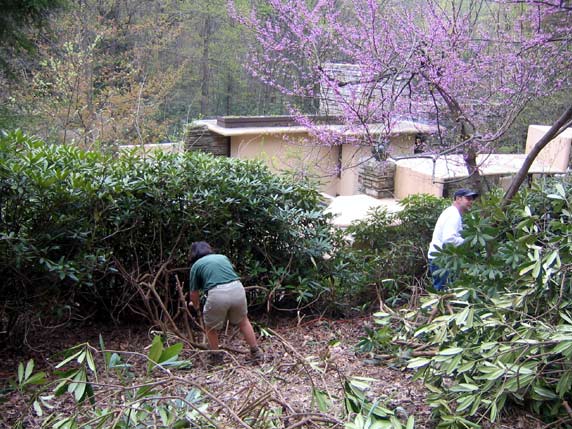MISSION STATEMENT The Western Pennsylvania Conservancy protects, conserves and restores land and water for the diversity of the region's plants, animals and their ecosystems.
A message from WPC Board Chairman E. Michael Boyle
A message from WPC President
Establishing a conservation plan for Bear Run Nature Reserve
Targeting a leading pollution source in Pennsylvania
Prioritizing conservation measures in 57 counties
Establishing forestland protection measures
Celebrating and protecting Fallingwater and its setting
Exploring the natural possibilities of Mount Washington
|
Celebrating and protecting Fallingwater and its setting The year 2005 marked the 70th anniversary of the day Frank Lloyd Wright first put pencil to paper and produced the revolutionary design for a mountain retreat that quickly became one of the most famous houses of all time. The Western Pennsylvania Conservancy continues to develop new ways to experience the masterwork and, in 2005, added two new specialized tours. A Sunset Tour combines a late-afternoon, in-depth tour of the house and grounds, led by the senior interpretive staff, with outdoor refreshments. Focus Tours allow visitors to tour Fallingwater with a member of the curatorial staff, then share a private lunch and lively conversation about Fallingwater’s history.
In 2005, the WPC began implementing a landscape masterplan for the area that surrounds Fallingwater. A major goal of this plan is the removal of various invasive plant species including English ivy, wisteria, bush honeysuckle and winged euonymus (burning-bush), which have escaped from cultivation on the grounds into the forest surrounding the Fallingwater house and threaten a number of native trees, other plants and wildlife.
|
|


